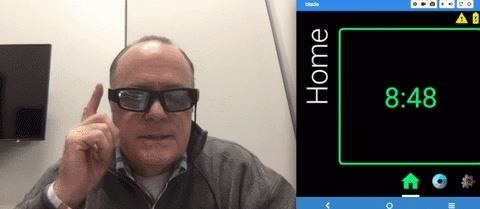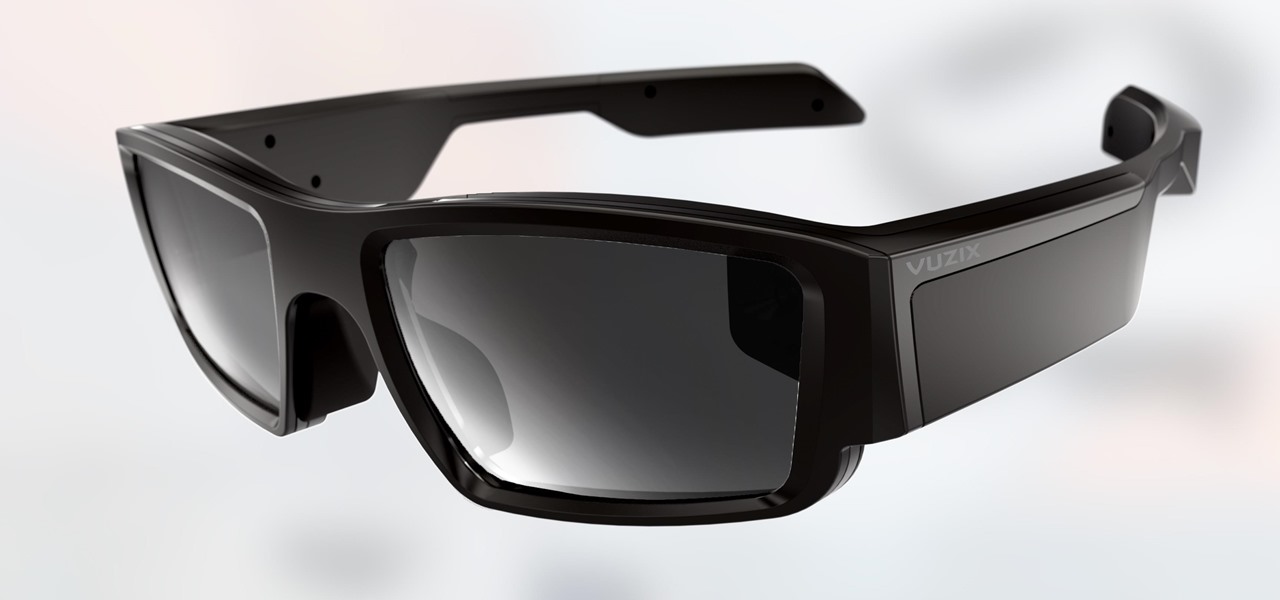Up until now, experiencing augmented reality through Vuzix's next-generation Blade 3000 smartglasses would have required a trip to a tech conference where the company has an exhibition booth.
Thanks to Paul Boris, the chief operating officer at Vuzix, you can now get a brief glimpse of the company's latest AR hardware experience. Boris recently posted his first ever video on his personal YouTube account, showing the AR view of an engineering unit. The video mirrors the Blade's display via tethering, so we don't actually get an appreciation for the first-hand experience, but we do get a sense of its user interface and functionality.

After scrolling through the device's home screen, Boris runs the Harvard Business Review AR Android app, which scans markers in the "Manager's Guide to Augmented Reality" insert from the magazine's November/December 2017 issue. In this instance, the app simulates an AR app integrated with IoT robotics for a fictitious paper plane factory.
During the video, Boris gives the impression that he's showing viewers something they aren't allowed to see yet (how the Blade 3000 works), quickly cutting the recording short when he hears someone coming. I'll take this as a bit of theatrics on his part rather than as an actual unauthorized leak. (Come on, he's the COO.)

The Blade 3000 represents the form factor of the future for the smartglasses. Unlike the company's M300 model, targeting the enterprise market, where the display and components are appended to the frame, à la Google Glass, the Blade's components are tucked away inside the frame of the device, which resembles a pair of slightly oversized wraparound sunglasses.
Displaying content through waveguide optics and a Cobra II display engine to a full-color monocular display, the Blade 3000 will also have a binocular version for video viewing (it also supports prescription lenses).
The Blade runs Android 5.0 off of a quad-core ARM CPU, so it can work as a standalone device with Wi-Fi connectivity. It can also tether to an iPhone or Android smartphone via Bluetooth to mirror notifications. Additionally, the Blade also sports an HD camera, a touchpad with haptic feedback for UI navigation, noise canceling mics for voice commands, and sensors for head-motion tracking.
However, don't start throwing your money at your screen just yet.
"You're not going to get one of these for just a little bit yet, but, I've got to tell you, everybody is talking about [it]. This is actually what we're doing at Vuzix." said Boris during the video recording. "I thought this was wicked cool."
On its official YouTube account, Vuzix also has a slicker video simulation of how the Blade would work in real life. (Certainly, it's no coincidence that both videos were published on the same day.)
"We generally talk about a $1K price point," Boris told Next Reality when asked about the device's price. "We will be demonstrating production build units at CES, so the dev kits are around that time frame."
Just updated your iPhone? You'll find new features for Podcasts, News, Books, and TV, as well as important security improvements and fresh wallpapers. Find out what's new and changed on your iPhone with the iOS 17.5 update.























Be the First to Comment
Share Your Thoughts